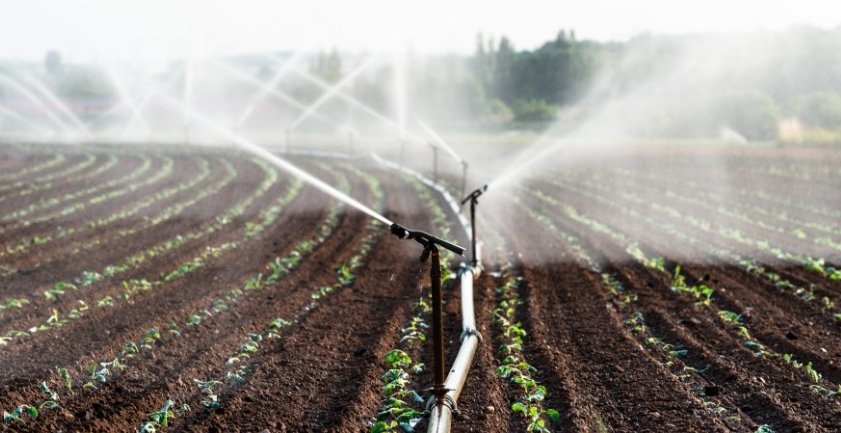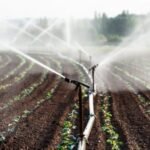Scotland’s food industry faces rising costs from climate change, known as climateflation, affecting everything from strawberries to whisky. As of September 2025, experts warn that erratic weather is pushing up prices and straining supplies across the nation.
This trend hits farmers and consumers hard, with predictions of even bigger impacts by 2050. Recent data shows how changing climates disrupt agriculture and the food chain in Scotland.
What Is Climateflation?
Climateflation refers to the way climate change drives up food costs through extreme weather and supply issues. It combines climate effects with inflation, creating higher prices for everyday items.
In Scotland, this means more than just bad weather. Farmers deal with floods, droughts, and unpredictable seasons that cut yields and raise production costs. A recent report highlights how these changes could boost UK food prices by over 30 percent in the coming decades.
Experts point out that global warming worsens these problems. For instance, warmer temperatures alter growing seasons, while heavy rains damage crops. This leads to shortages that push prices higher for buyers.
Scotland’s unique position adds to the challenge. Its cooler climate once protected some crops, but now shifting patterns threaten traditional farming. Consumers already notice pricier groceries, and the trend shows no sign of slowing.

Key Impacts on Scottish Agriculture
Scottish farmers report tougher conditions from climate change. Over the last century, the nation’s climate shifted significantly, bringing more floods and dry spells.
Droughts could double in number over the next 25 years, according to studies. This threatens water supplies for crops and livestock, especially in key areas like the Highlands.
Pests and diseases spread faster in warmer weather, hitting productivity. Soil quality suffers too, as erosion from heavy rains washes away nutrients.
Here are some major effects farmers face:
- Shorter harvest windows for fruits like strawberries, reducing supply.
- Higher feed costs for livestock due to poor grass growth.
- Increased risks of crop failure from extreme events like storms.
These issues force farmers to spend more on irrigation and protection. Many adapt by switching crops or using new tech, but costs add up quickly.
Livestock herds might need cuts to meet emission goals, with recommendations for a 27 percent reduction by 2040. This could limit meat and dairy output, further driving prices.
In 2025, a wet harvest season already lowered yields in some regions. Farmers describe it as chaotic, with earlier harvests and extra feed needs for animals.
How It Affects the Food Chain
Climateflation ripples through Scotland’s food chain, from farms to shops. Supply shortages mean higher costs for processors and retailers.
Seafood suffers as warmer waters change fish patterns. Whisky production faces risks from barley crop failures due to weather swings.
Consumers see the impact at checkout. Prices for basics like bread and milk climb as import costs rise from global disruptions.
A table below shows projected price increases for common Scottish foods by 2030, based on current trends:
| Food Item | Current Average Price (2025) | Projected Price (2030) | Main Reason for Increase |
|---|---|---|---|
| Strawberries | £2.50 per punnet | £3.20 | Shorter seasons, lower yields |
| Beef | £10 per kg | £13.50 | Feed costs, herd reductions |
| Whisky (bottle) | £25 | £32 | Barley supply issues |
| Potatoes | £1.20 per kg | £1.60 | Flood damage, pests |
This table illustrates how everyday items could cost more. Families budget tighter, while exporters worry about Scotland’s premium reputation.
Quality drops too, with fruits losing flavor from stress. The chain weakens as small producers struggle most, potentially leading to fewer local options.
Future Projections and Risks
Looking ahead, experts forecast tougher times. By 2050, UK farmland loss could reach 25 percent, threatening food security.
In Scotland, emissions from agriculture might fall by nearly 40 percent with changes, but at a cost to output. Global events, like floods in rice-producing areas, add pressure on imports.
Rising temperatures could slash farm incomes by up to 66 percent per degree increase. Water strains and yield drops of 40 percent loom if trends continue.
Recent events, such as the 2025 summer heatwaves in Europe, show how interconnected supplies are. Scotland’s reliance on imports makes it vulnerable.
Without action, food inflation could hit 34 percent across the UK by mid-century. This ties into broader trends, like the 2024 warnings for doubled droughts in Scotland.
Strategies to Fight Back
Scotland can counter climateflation through smart moves. Investments in resilient farming practices top the list.
Innovation helps, like drought-resistant crops and better water management. Government support for tech and training aids farmers.
Valuing food differently means supporting local producers and reducing waste. Policies that cut emissions while boosting output show promise.
Communities play a role by choosing sustainable options. Recent initiatives, such as advisory services for adapting to change, guide the way.
Experts call for recalibrating supply chains to handle shocks. This includes diversifying sources and building storage for tough times.
Why This Matters Now
Climateflation creeps in quietly but hits hard on wallets and tables. It ties into global challenges, urging immediate steps.
Scotland’s food heritage deserves protection through collective effort. Staying informed helps everyone prepare.
Share this article if it resonates with you, and comment below on how climate change affects your shopping. Your thoughts could spark needed discussions.


















